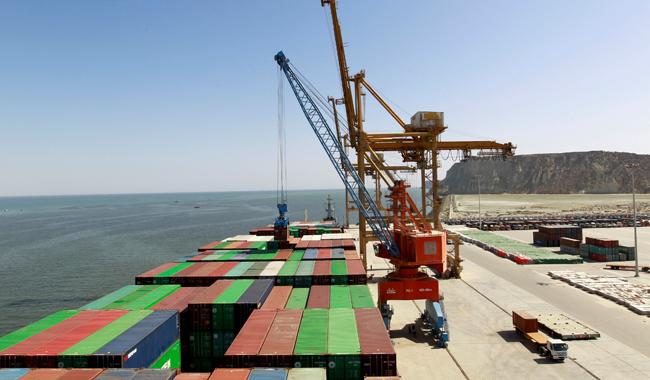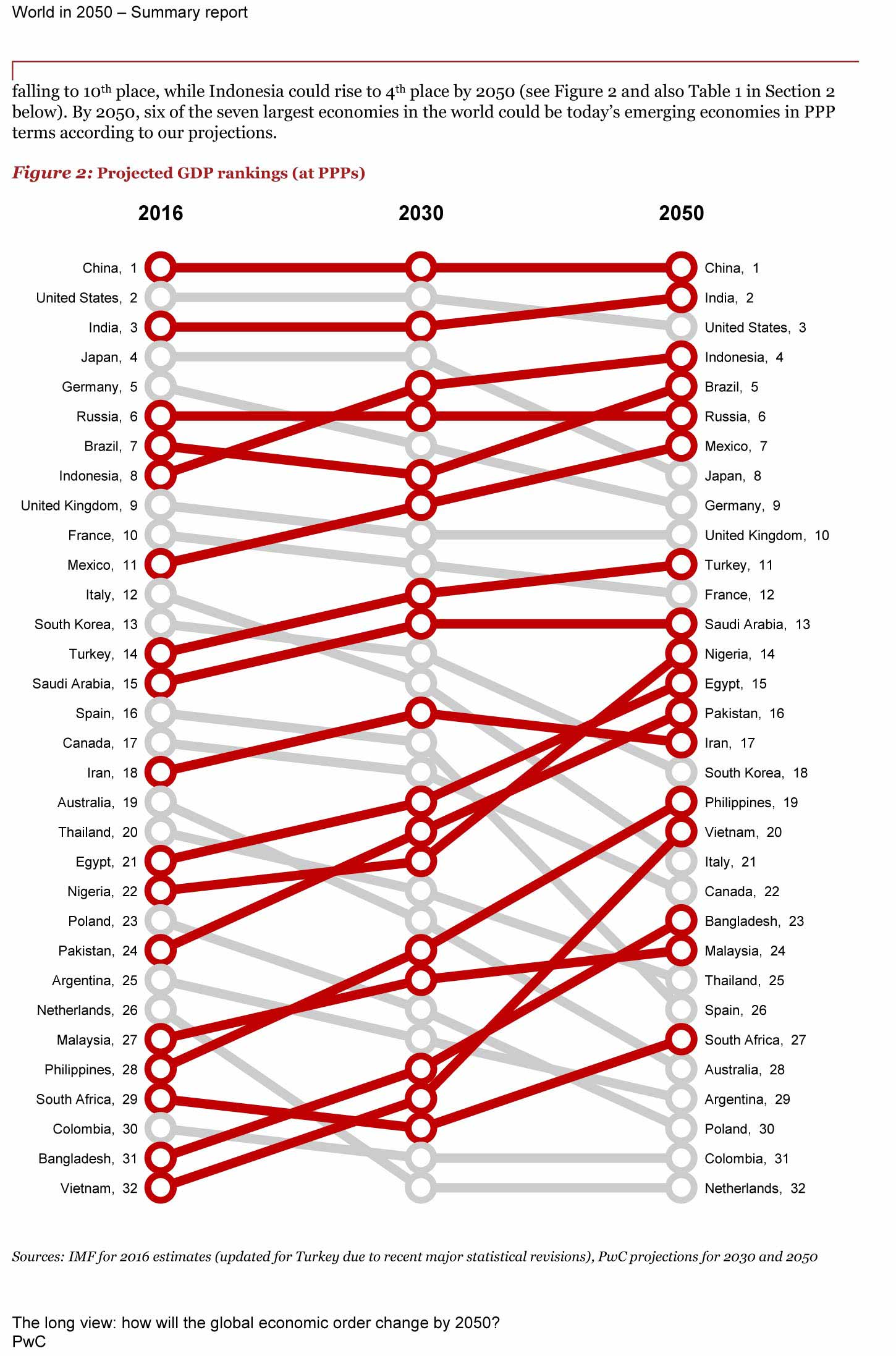Pakistan to be 20th most powerful economy by 2030: PwC
KARACHI:
Citing Pakistan’s growth rate, one of the world's largest professional-services firms, PricewaterhouseCoopers, have ranked Pakistan to be among top 20 powerful economies by 2030 and 16th by 2050.
The
in the world by 2050, based on their projected Gross Domestic Product by Purchasing Power Parity (PPP).
The report, titled "The long view: how will the global economic order change by 2050?" ranked 32 countries by their projected global gross domestic product by purchasing power parity.
Purchasing Power Parity (PPP) is an economic theory that compares different countries' currencies through a market "basket of goods" approach. PPP determines the economic productivity and standards of living of various countries over a period. Since market exchange rates fluctuate substantially, many economists consider PPP as a more precise way of estimating a country’s economy.
The consulting firm also predicted 2050 GDP numbers based on market exchange ratings, an alternative method for GDP calculation. In these rankings, the US will lose global dominance by 2030, and the gap will only grow by 2050 with China having a nearly $50 trillion GDP, and the US having the same $34.1 trillion.
Following is the list of top 32 economies by 2030:
01. China — $38.008 trillion
02. United States — $23.475 trillion
03. India — $19.511 trillion
04. Japan — $5.606 trillion
05. Indonesia — $5.424 trillion
06. Russia — $4.736 trillion
07. Germany — $4.707 trillion
08. Brazil — $4.439 trillion
09. Mexico — $3.661 trillion
10. United Kingdom — $3.638 trillion
11. France — $3.377 trillion
12. Turkey — $2.996 trillion
13. Saudi Arabia — $2.755 trillion
14. South Korea — $2.651 trillion
15. Italy — $2.541 trillion
16. Iran — $2.354 trillion
17. Spain — $2.159 trillion
18. Canada — $2.141 trillion
19. Egypt — $2.049 trillion
20. Pakistan — $1.868 trillion
21. Nigeria — $1.794 trillion
22. Thailand — $1.732 trillion
23. Australia — $1.663 trillion
24. Philippines — $1.615 trillion
25. Malaysia — $1.506 trillion
26. Poland — $1.505 trillion
27. Argentina — $1.342 trillion
28. Bangladesh — $1.324 trillion
29. Vietnam — $1.303 trillion
30. South Africa — $1.148 trillion
31. Colombia — $1.111 trillion
32. Netherlands — $1.08 trillion




